Discover 20 hidden attractions, cool sights, and unusual things to do in Thiruvananthapuram (India). Don't miss out on these must-see attractions: Napier Museum, Thiruvananthapuram Zoo, and Padmanabhaswamy Temple. Also, be sure to include Kanakakkunnu Palace in your itinerary.
Below, you can find the list of the most amazing places you should visit in Thiruvananthapuram (Kerala).
Table of Contents
Napier Museum
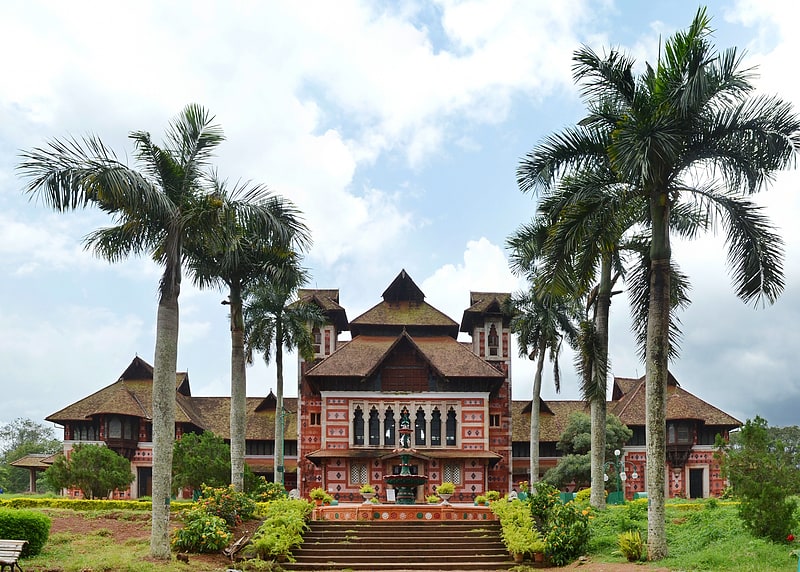
Museum in Thiruvananthapuram, India. The Napier Museum is an art and natural history museum situated in Thiruvananthapuram, India.
The Museum is grounds to the Trivandrum Zoo, one of the oldest zoological gardens in India. The zoo was established in 1857 over 55 acres (220,000 m2) of land. It also contains the Sree Chitra Art Gallery, a separate art gallery established in 1935.
The set of museums, along with the zoo, are managed by the Department of Museums and Zoos, a branch of the Department of Cultural Affairs of Kerala.[1]
Address: Near, Museum Junction, 695033 Thiruvananthapuram
Thiruvananthapuram Zoo
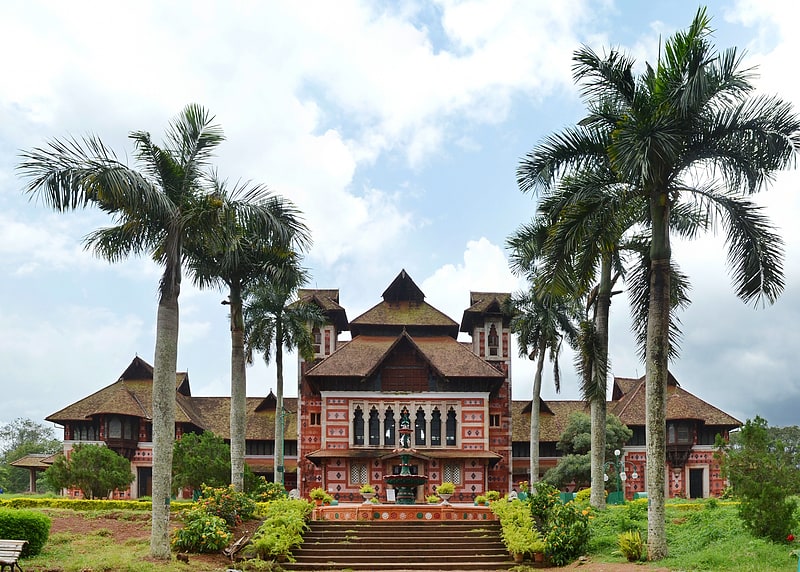
Oldest zoo in India with over 80 species. The Thiruvananthapuram Zoo is located in the city of Thiruvananthapuram, the capital of Kerala, India. It occupies 55 acres of woodland, lakes, and lawns.[2]
Address: Near Museum Police Station, 695033 Thiruvananthapuram (Trivandrum)
Padmanabhaswamy Temple

Also known as: पद्मनाभस्वामी मंदिर
Monumental Hindu shrine to Vishnu. The Shree Padmanabhaswamy Temple is a Hindu temple located in Thiruvananthapuram, the state capital of Kerala, India. It is considered as the richest place of worship in the world. The name of the city of 'Thiruvananthapuram' in Malayalam translates to "The City of Lord Ananta", referring to the deity of the Padmanabhaswamy temple. The temple is built in an intricate fusion of the Chera style of architecture, featuring high walls, and a 16th-century gopura. While the Ananthapura temple in Kumbla in Kasaragod is considered as the original seat of the deity, architecturally to some extent, the temple is a replica of the Adikesava Perumal temple in Thiruvattar.
The principal deity Padmanabhaswamy (Vishnu) is enshrined in the "Anantha Shayana" posture, the eternal yogic sleep on the infinite serpent Adi Shesha. Padmanabhaswamy is the tutelary deity of the royal family of Travancore. The titular Maharaja of Travancore, Moolam Thirunal Rama Varma, is the trustee of the temple.[3]
Address: West Nada, 695023 Thiruvananthapuram
Kanakakkunnu Palace
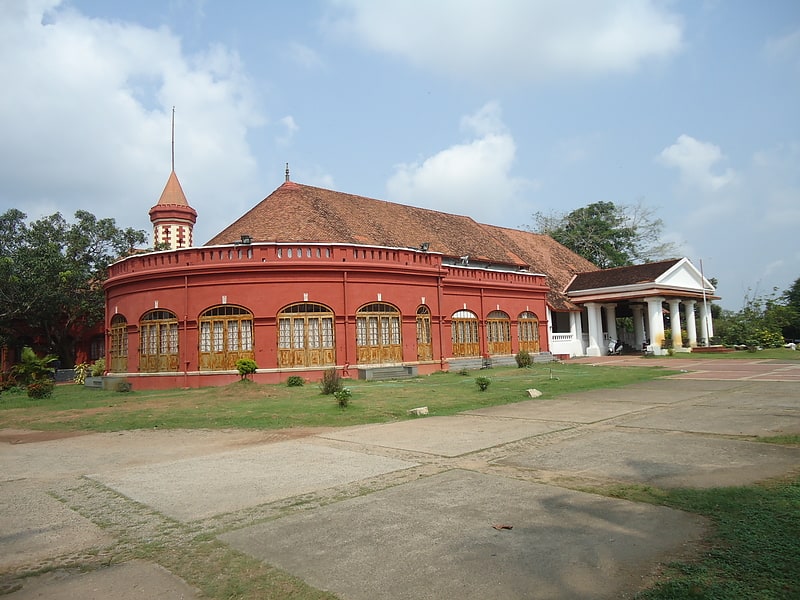
Museum in Thiruvananthapuram, India. Kanakakkunnu Palace is situated in Thiruvananthapuram near the Napier museum, India. It is India's first digital garden, created by Akhilesh S. V. Nair and A. Gangaprasad, University of Kerala, Department of Botany.
Today the palace and its sprawling grounds are the venue for many cultural meetings and programmes. An all India Dance Festival (October - March) is organised by the Department of Tourism every year. During this period the classical Indian Dance performances are conducted every day. There are many tourists streaming from foreign countries every year.[4]
Vellayani Lake
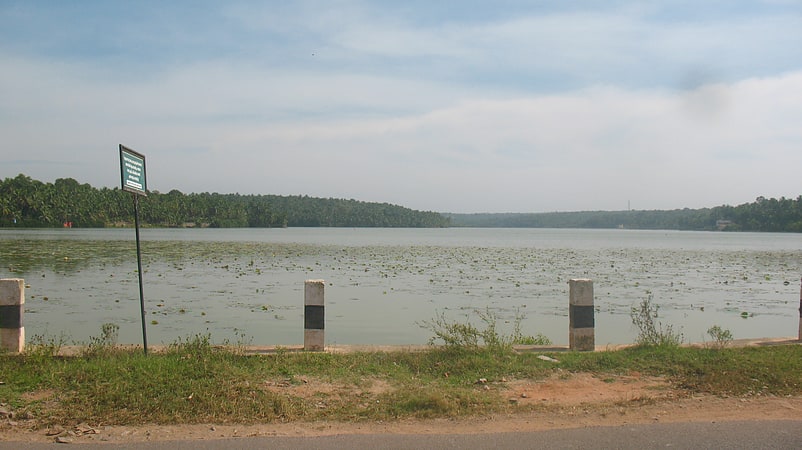
Also known as: वेल्लयानी झील
Lake in India. Vellayani Lake, or Vellayani Kayal as known in local language, is the largest fresh water lake in Thiruvananthapuram district, of Kerala, India.[5]
Vizhinjam lighthouse
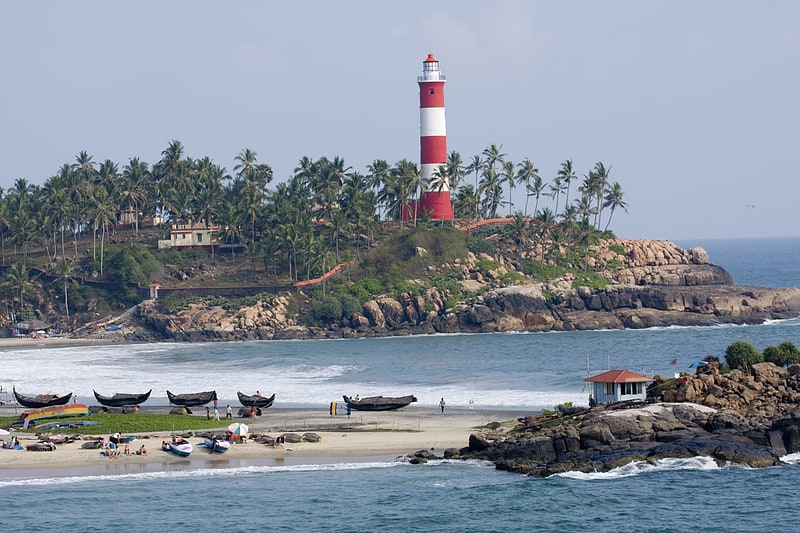
Lighthouse in India. Vizhinjam Lighthouse is situated near Kovalam beach in Kerala. It started functioning on 30 June 1972. Vizhinjam was a busy seaport in the eighteenth and nineteenth centuries. Before the current light was installed, there were no lighthouses at this location. A day mark beacon must have been there in 18th century. After 19th century, this port was in a neglected state. A lighted beacon was constructed in 1925 at nearby Kolachal. Subsequently, a day mark beacon was provided at Vilinjam during 1960.[6]
Address: Off Lighthouse Beach, 695521 Thiruvananthapuram (Trivandrum)
St. Joseph's Cathedral
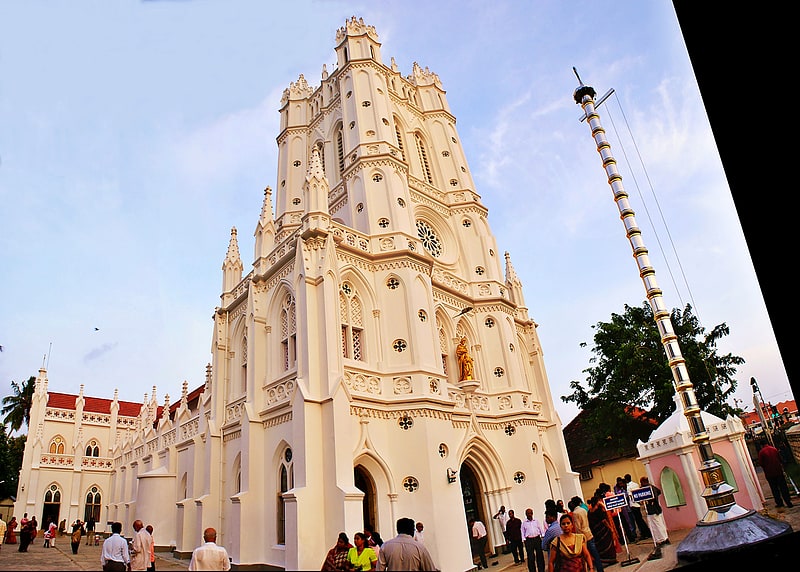
Cathedral in Thiruvananthapuram, India. St. Joseph's Metropolitan Cathedral, also known as Palayam Palli is the Roman Catholic Latin Rite cathedral of the Archdiocese of Trivandrum. The first church was built here in 1873. The church was intended in the manner of a cross in 1912. The final stage of extension, including the Gothic style facade and the bell-tower was completed in 1927. The three bells were brought from Belgium and were named Joseph, Xavier, and Aloysius in honour of St. Joseph, the Patron of the Church, St. Francis Xavier, the Apostle of India and Bishop Aloysius Maria Benziger the pioneer Missionary-Bishop of Quilon respectively. Upon the bifurcation of the Diocese of Quilon, the new diocese of Trivandrum was formed on 1 July 1937, and St. Joseph’s Church became the cathedral of the newly formed diocese. When the diocese was raised to a metropolitan archdiocese in 2004, the cathedral became a metropolitan cathedral. The cathedral has a statue of its patron St. Joseph with the child Jesus in the middle of the facade and a statue of Jesus with hands raised atop the tower. The church which is white in colour was painted red from 1927 to 2010. It was renovated during the period 2008 to 2010.[7]
Address: M G Road, Thiruvananthapuram
Gandhari Amman Kovil
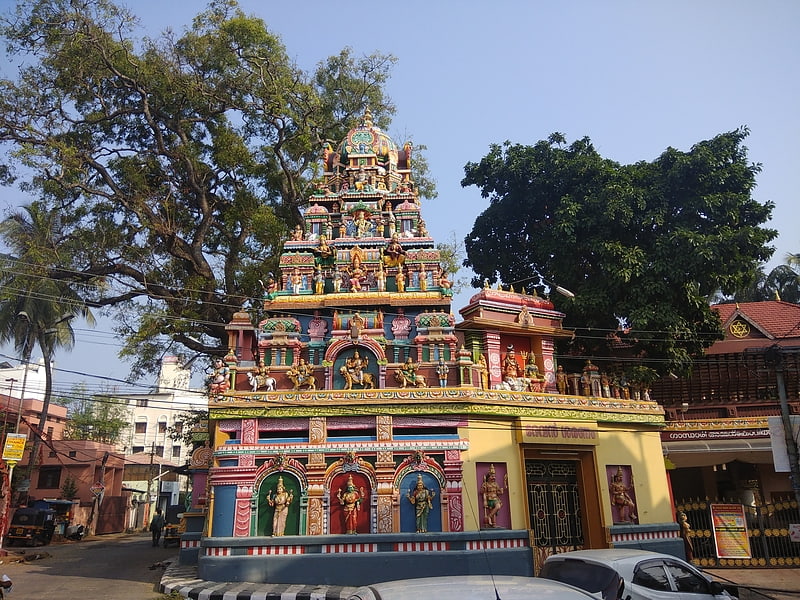
Gandhari Amman Kovil is a Hindu temple located at Mele Thampanoor, Thiruvananthapuram, Kerala, India. Gandhari amman is the principal deity in this temple. There are other small temples of Ganesha, Nagaraj and Manthramurthi are located in this temple complex. Chithra poornima is the main festival in this temple. This festival is celebrated in the month of May.
This kovil is located 1.5 km from Thiruvananthapuram central Railway Station, Thampanoor.[8]
Palayam Juma Mosque
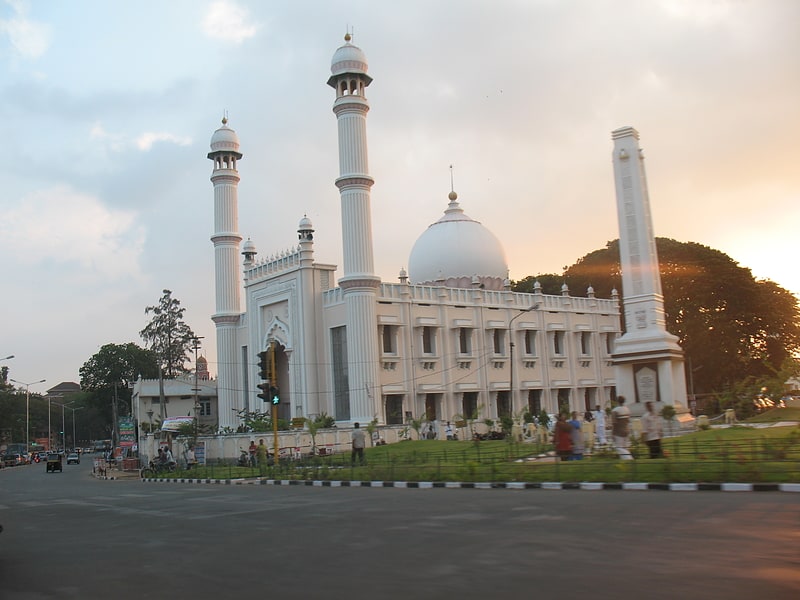
Masjid in Thiruvananthapuram, India. Masjid-i Jahān-Numā, commonly known as the Palayam Pally of Trivandrum, is the principal mosque of Trivandrum in Kerala, India. It is a Jama Masjid.
The Juma Masjid, Palayam Mosque is the most important mosque in Thiruvananthapuram. In Palayam, the mosque has a temple and a Christian church as its neighbours, establishing the communal harmony of Keralites.[9]
Mahatma Ayyankali Hall
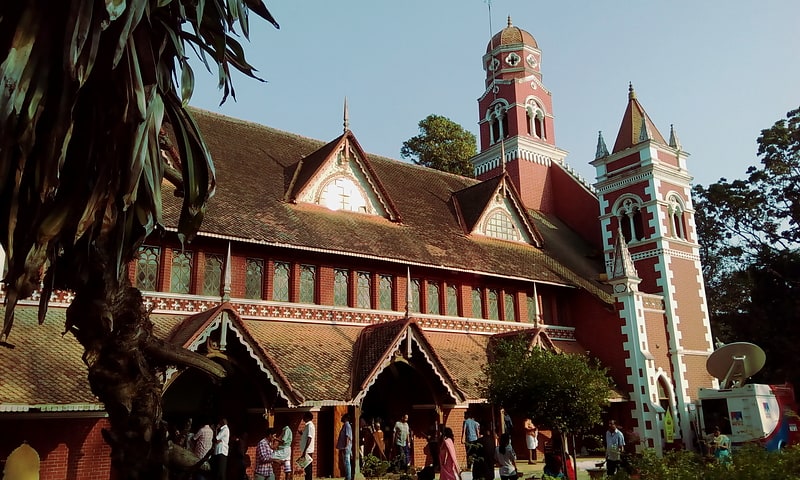
City or town hall in Thiruvananthapuram, India. Mahatma Ayyankali Hall, originally Victoria Jubilee Town Hall, also known by its former name "VJT Hall", is a town hall in Thiruvananthapuram, Kerala, India. It had originally been built as a gift from the British Empire to Sri Moolam Thirunal Rama Varma, the then Maharaja of Travancore, to commemorate the 50th anniversary of the coronation of Queen Victoria, the then Empress of India and Queen of Britain, in 1896.
In 2019, it was renamed by the current Chief Minister of Kerala Pinarayi Vijayan to honor the social reformer Ayyankali Renaming the building resulted in criticism from some historians who felt there would be a more appropriate way to honor Ayyankali. Nevertheless, Dalit activists, such as Sunny Kapikad, supported the renaming of the hall, as they feel Ayyankali has not been honored in a respectful manner and renaming the hall would give due respect to both Ayyankali and the Dalit community as a whole.
Today, this hall has retained its architectural and cultural richness and is one of the most sought-after centres for exhibitions and cultural get-togethers in Thiruvananthapuram.[10]
Kerala Science and Technology Museum
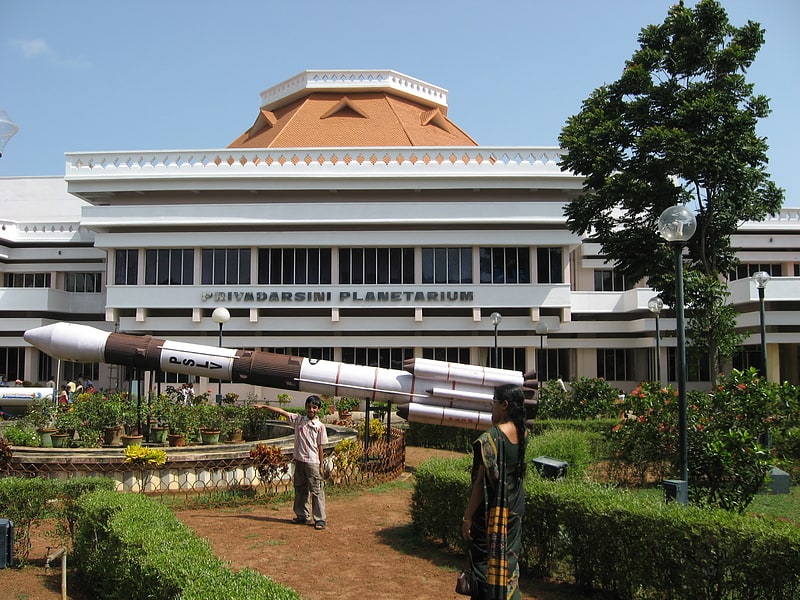
Museum in Thiruvananthapuram, India. Kerala Science and Technology Museum is an autonomous institution established by Government of Kerala, India, in 1984, as a center for popularisation of science and scientific temper among the general public, especially among the young generation. The institution is in the heart of Thiruvananthapuram city, in Kerala. The Priyadarsini Planetarium is attached to the museum, functioning since 1994.[11]
Address: Pmg Junction, Thiruvananthapuram
Pettah Market
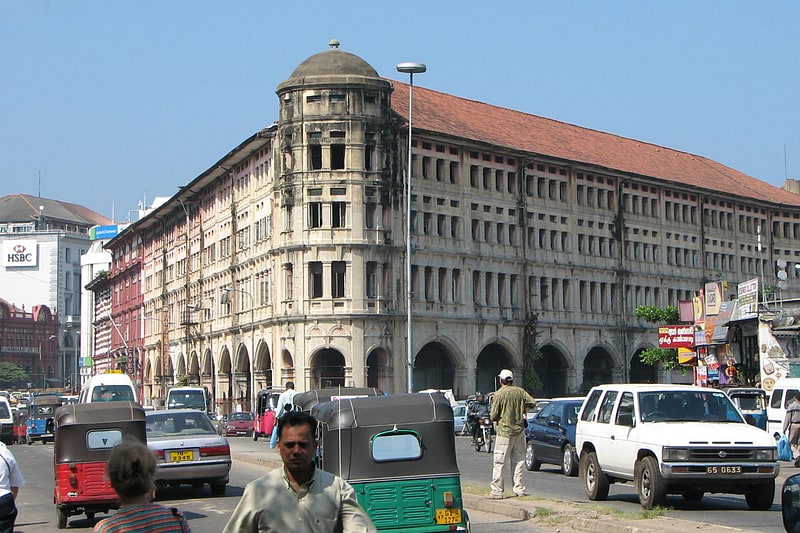
The Pettah Market also called Manning Market is an open market in the suburb of Pettah in the city of Colombo, Sri Lanka.
The entrance to the Pettah Market is marked formally by a tall monument in the centre of a roundabout, known as the Khan Clock Tower which was built by the family of Framjee Bhickajee Khan, an eminent Parsi family from Bombay who used to have substantial business interests in the country and who also owned the Colombo Oil Mills.
The Colombo Old Town Hall & Museum, which was built by the prominent Muslim Arasi Marikar Wapchie Marikar, is located at Kayman's Gate, so named because the Dutch used to stock crocodiles at Beira Lake to prevent their slaves from escaping. Today the building acts as a post office on the ground floor, and as a museum on the upper floor. Outside, there is an exhibit of old steam engines.
Most of the businesses in Pettah are dominated by Muslim who specialize in trading of goods and the Tamil people who have migrated from India traders who specialize in gold and jewelry shops. At the end of pettah is sea street which is Sri Lanka s gold market where people all around Sri Lanka come to purchase jewellery. It is a long street of jewellery shops with hundreds of shops next to one another. There are also some jewellery shops in main street gaspa junction.
The most recognizable building in the Pettah market is the candy-striped Jami Ul-Alfar Mosque (also known as The Red Mosque) which was built in 1909.[12]
Mateer Memorial Church

Anglican church in Thiruvananthapuram, India. C.S.I. Mateer Memorial Church, is a protestant congregation in Trivandrum
It was dedicated in the heart of the city in December 1906. The church is a member of the Church of South India (CSI).[13]
Address: Palayam - Airport Rd, 695033 Thiruvananthapuram
Anchuthengu
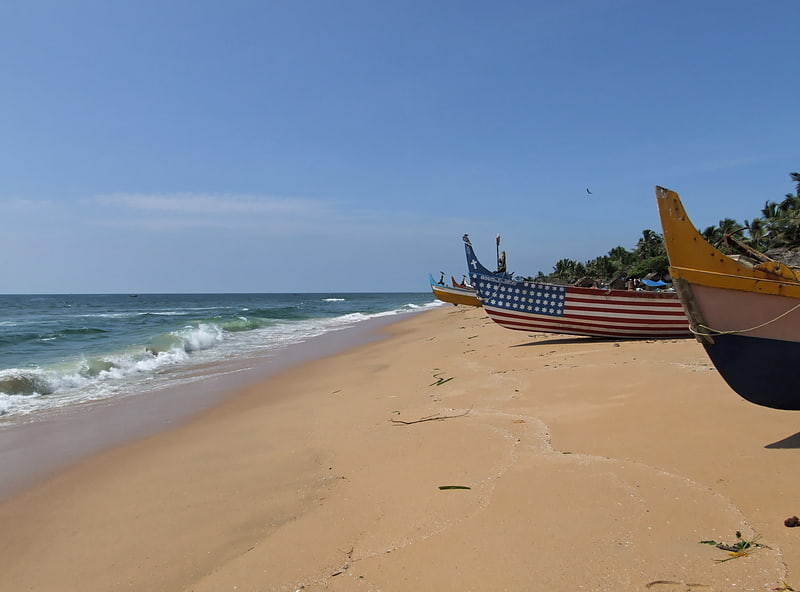
Anchuthengu, formerly known as Anjengo, Angengo or Anjenga, is a coastal panchayath and town in the Thiruvananthapuram District of Kerala. It is situated 9km south-west of Varkala Town along Trivandrum - Varkala - Kollam coastal highway.
The town contains old Portuguese-style churches, a lighthouse, a 100-year-old convent and school, tombs of Dutch and British sailors and soldiers, and the remains of the Anchuthengu Fort. Kaikara village, the birthplace of the famous Malayalam poet Kumaran Asan, is located nearby. Temples in the area are Parambil Sree Bhadrakali Yogeeshwara Kshethram and Sree Bala Subrahmanya Swami Kshethram.
Anchuthengu is about 36 kilometers (22 mi) north of Thiruvananthapuram. The nearest airport is Trivandrum International Airport. Kadakkavur Railway Station is 2 kilometers (1.2 mi) away.[14]
St. Theresa of Lisieux Catholic Church

St. Theresa of Lisieux Catholic Church, Vellayambalam is a Latin Catholic church in Vellayambalam junction, in the city of Trivandrum, capital of the state of Kerala, India. It is dedicated to Saint Thérèse of Lisieux.It is very close to the Arch Bishop's residence & The Raj Bhavan.[15]
Tropical Botanic Garden and Research Institute

Research institute in India. "Jawaharlal Nehru Tropical Botanic Garden and Research Institute", renamed in the fond memory of visionary Prime Minister of India Shri Pandit Jawaharlal Nehru is an autonomous Institute established by the Government of Kerala on 17 November 1979 at Thiruvananthapuram, the capital city of Kerala. It functions under the umbrella of the Kerala State Council for Science, Technology and Environment, Government of Kerala. The Royal Botanic Gardens, Kew played an exemplary and significant role in shaping and designing the lay out of the JNTBGRI garden in its formative stages.
The Institute undertakes research in conservation biology, Biotechnology, plant taxonomy, microbiology, phytochemistry, ethnomedicine and ethnophamacology, which are the main areas considered to have immediate relevance to the development of the garden. While taxonomists prepared a flora of the garden documenting the native plant wealth before mass introduction and face lift which subsequently followed, the bio-technologists mass multiplied plants of commercial importance, especially orchids for cultivation and distribution to the public.
JNTBGRI makes a comprehensive survey of the economic plant wealth of Kerala, to conserve, preserve and sustainably utilize the plant wealth. The institute carries out botanical, horticultural and chemical research for plant improvement and utilization; and offers facilities for the improvement of ornamental plants and propagation in the larger context of the establishment of nursery and flower trade. The cultivation and culturing of plants of India/other countries with comparable climatic condition for the economic benefit of Kerala/India is also taken care. Activities to help botanical teaching and to create public understanding of the value of plant research is initiated by JNTBGRI. JNTBGRI gardens medicinal plants, ornamental plants and various introduced plants of economic or aesthetic value. JNTBGRI also serves as a source of supply of improved plants which are not readily available from other agencies.
Scientific researches on plant wealth are pursued through the following Divisions:
1. Garden Management, Education, Information and Training
2. Plant Genetic Resources
3. Biotechnology and Bioinformatics
4. Conservation Biology
5. Ethnomedicine and Ethnopharmacology
6. Phytochemistry and Phytopharmacology
7. Plant Systematics and Evolutionary Sciences
8. Microbiology[16]
Syro-Malankara Catholic Church
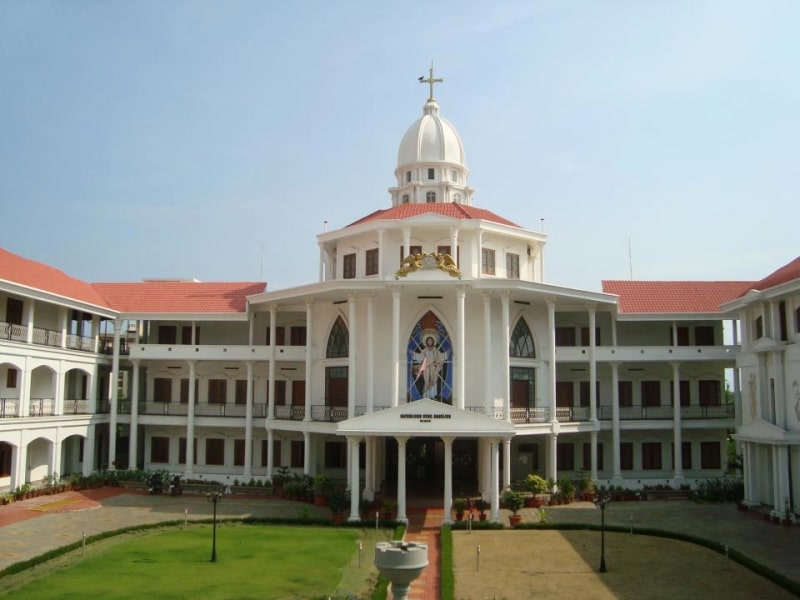
Catholic church in Thiruvananthapuram, India. The Syro-Malankara Catholic Church, also known as the Malankara Syrian Catholic Church, is an Eastern Catholic, autonomous, particular church, in full communion with the Holy See and the worldwide Catholic Church, with self-governance under the Code of Canons of the Eastern Churches. It is one of the major archiepiscopal Churches of the Catholic Church that are not distinguished with a patriarchal title. It is headed by Major Archbishop Baselios Cardinal Cleemis Catholicos of the Major Archdiocese of Trivandrum based in Kerala, India.
The Malankara Syrian Catholic Church traces its origins to the missions of Thomas the Apostle in the 1st century. The Church employs the West Syriac Rite Divine Liturgy of Saint James. It is one of the two Eastern Catholic churches in India, the other being the Syro-Malabar Church which employs the East Syriac Rite liturgy.
The Malankara Syrian Catholic Church was formed on 20 September 1930 as a result of the reunion movement under the leadership of Archbishop Geevarghese Ivanios, when it split from the Malankara Orthodox Syrian Church and entered into communion with the Catholic Church. The Malankara Church itself had emerged from the split within the Saint Thomas Christian community of the 17th century; after the Coonan Cross Oath in 1653, the Malankara Church emerged as the faction that stood with Archdeacon Thoma I in swearing to resist the authority of the Latin Catholic Portuguese Padroado. This faction entered into a relationship with the Syriac Orthodox Church of Antioch and adopted the West Syriac Rite (the Saint Thomas Christians of India had until this point used the East Syriac Rite inherited from the historic Church of the East). The Syro-Malankara Catholic Church represents the group from this Malankara faction that reunited with Rome in the 20th century (1930).
Mar Ivanios started to have negotiations with the Holy See of Rome in 1926 to enter into a new communion. The two bishops including Ivanios, a priest, a deacon and a layman were received into the Catholic Church together on 1930. This resulted in a significant movement of the faithful into the Malankara Catholic Church. Hindus, especially from Nadar community, also joined the Malankara Catholic Church. By 1950 there were some 65,588 faithful, in 1960 112,478, and in 1970 183,490. There are now over 400,000 faithful in over 12 dioceses in India and across the world.[17]
Kovalam
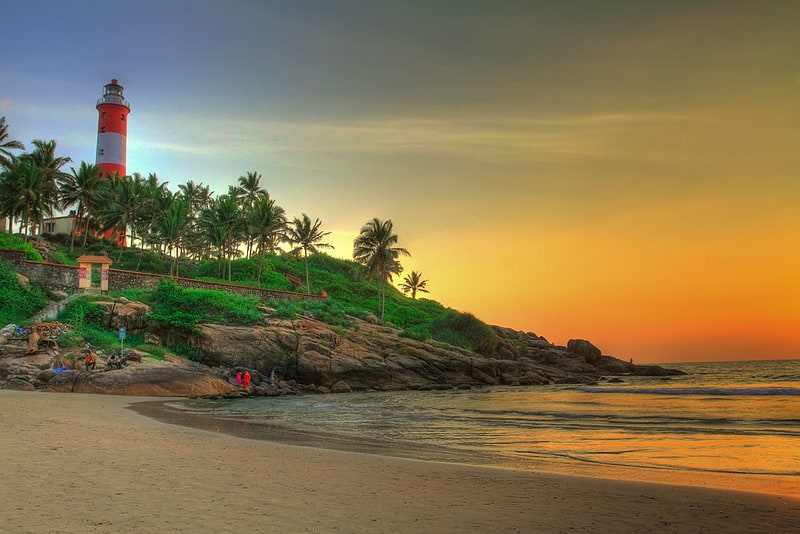
Also known as: कोवलम
City in India. Kovalam is a region in the city of Trivandrum, around 13 km southwest of the city center, whose beaches are a tourist destination.[18]
Vellayani Devi Temple

Hindu temple in Vellayani, India. The Vellayani Devi is a highly revered shrine in Kerala, India, dedicated to goddess Bhadrakali. The shrine is situated in Vellayani 1.5 km west of Vellayani junction, 12 km southeast of Thiruvananthapuram on the eastern bank of Vellayani Lake. The temple is under the management of Travancore Devaswom Board. The temple structure has a bronze roof with traditional art work and carries Dravidian architecture. The temple has eastern and northern towers called Gopurams with statues of different Gods sculptured in them. The Gopurams function as gateways through the walls that surround the temple complex.
Vellayani Devi Temple is renowned for celebrating the longest non-Pilgrimage festival of South India and the duration of the festival is around 56 to 65 days. This festival is held every three years.[19]
Kowdiar Palace
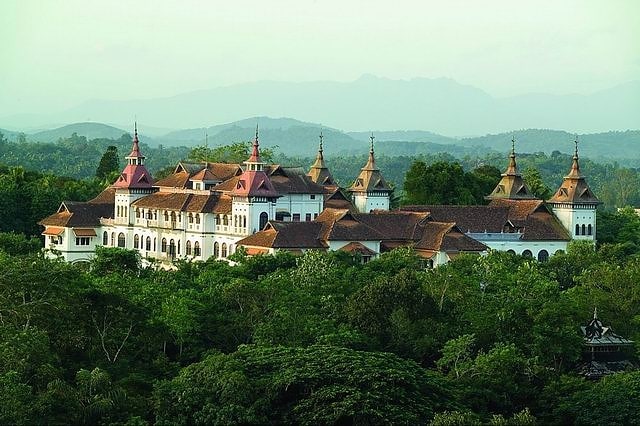
Palace in Thiruvananthapuram, India. Kowdiar Palace in Thiruvananthapuram, Kerala, India was built in 1934 by Maharajah Sree Chithira Thirunal Balarama Varma, on Pallikettu of his only sister, Maharani Karthika Thirunal Lakshmi Bayi with Lt. Col. G. V. Raja. After the Constitutional Amendment of 1971, the properties and estates of the royal family were partitioned and divided equally among the branches of the two Travancore Queens, Sethu Lakshmi Bayi and Sethu Parvathi Bayi. This Palace belongs to the heirs of Sethu Parvathi Bayi as it was built by her son Maharajah Sree Chithira Thirunal.
Kowdiar Palace's architectural work is famous and has over 150 rooms. The entry to this palace is restricted as it is the private residence of the royal family settled in Thiruvananthapuram.[20]
Address: Kowdiar Gardens, 695003 Thiruvananthapuram (Trivandrum)